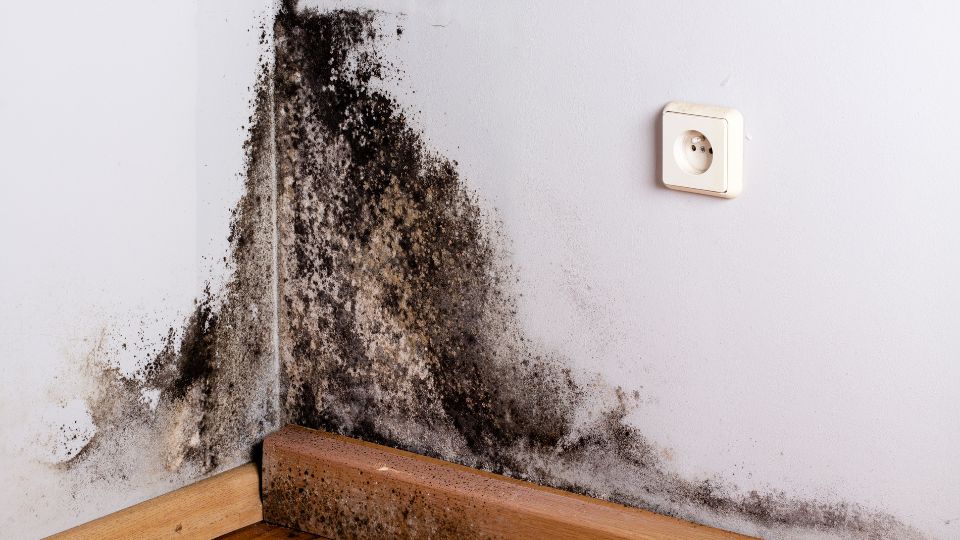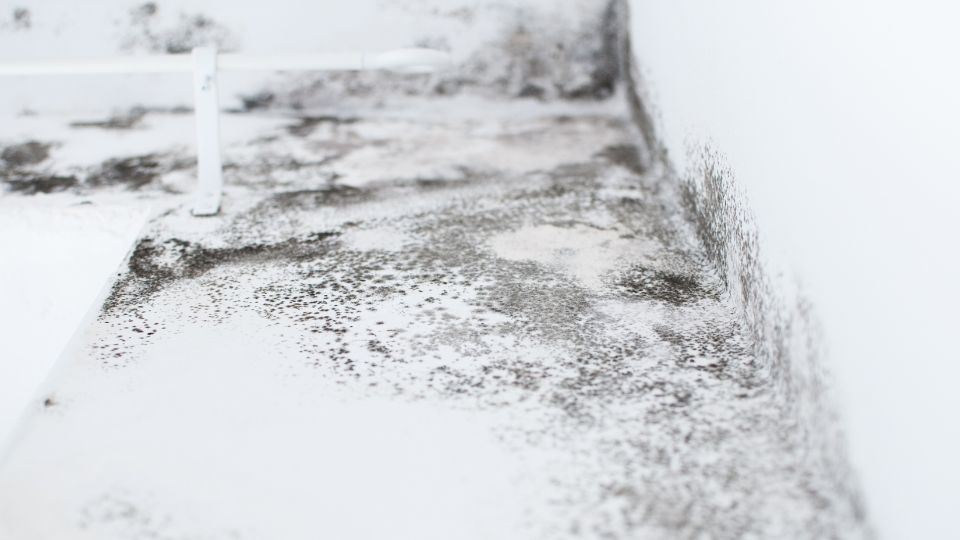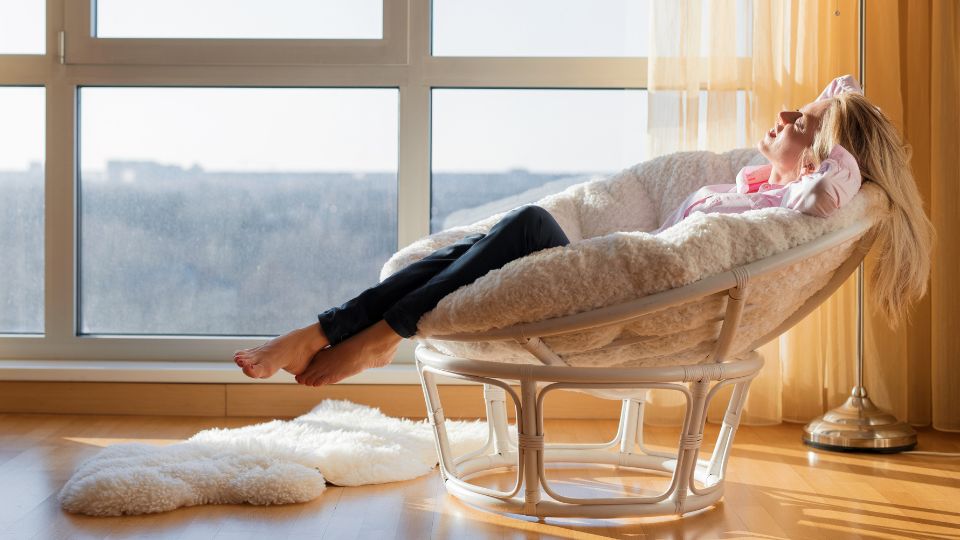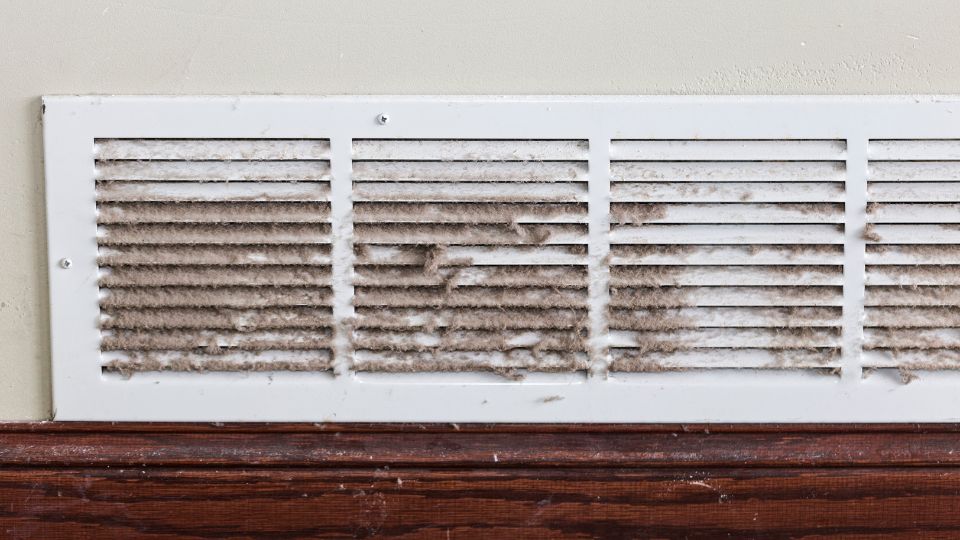
by Mold-B-Gone | Feb 21, 2023 | Black Mold, Mold Facts
Mold is regularly idea of as a hassle that solely impacts homes. However, the reality is that it can additionally be extreme trouble for businesses. Mold can reason more than a few fitness issues uncovered in humans, and in some cases, it can even be deadly. That’s why it is necessary to comprehend what black mildew is and what you should do if you suppose you have a mildew problem.
Read more: What Does Black Mold Smell Like?
We will talk about the risks of black mildew and the signs you have to appear out for. We’ll additionally suggest how to forestall mold from developing in your business.
What Is Black Mold?
Black mold is a fungus that can be located both indoors and outdoors. It’s most frequently related to solid and musty odors, and it usually seems like black, green, or white spots on surfaces such as walls, ceilings, floors, and furniture. Sometimes these spots are visible, and the scent is detectable.
When inhaled, black mold spores can cause many troubles, ranging from coughing and sneezing to pores, skin inflammation, and respiratory infections. These spores can set off allergies and reactions as they are airborne. If left untreated, black mildew can lead to long-term fitness troubles such as fatigue and depression.
Symptoms of Black Mold Inhalation
When we inhale black mold spores, the possible fitness dangers vary from slight to severe. Some of the most frequent signs related to black mold inhalation encompass respiratory problems such as coughing, wheezing, and challenging breathing; nasal congestion; throat irritation; eye inflammation together with redness and watery eyes; complications and fatigue; pores and skin rashes or irritation; and in extra extreme cases, reminiscence loss or disorientation.
People with compromised immune systems, asthma, allergies, or different lung illnesses are at a greater chance of experiencing severe issues from black mildew inhalation.
Tips To Manage Black Mold Exposure
The unique way to stop unfavorable health issues from black mildew is to keep away from it altogether. If you suspect your place has a mildew problem, there are steps you can take to limit your danger of being exposed.
- Have your place inspected: An expert contractor may also be capable of perceiving areas the mold spores are most likely to thrive.
- Keep your areas dry: Fix any water leaks and clear any spills as quickly as they occur. Reduce humidity degrees in your place using an air conditioner or dehumidifier, and leave home windows open when climate permits.
- Clean affected areas regularly: Use a vacuum cleaner with a HEPA filter to suck up as many mildew spores as possible. Clean surfaces with a moderate detergent and heated water, then dry them entirely.
- Wear the best clothing: If you’re going into a region with black mold, wear masks or respirators rated for mold protection. Also, wear gloves, lengthy sleeves, and pants to protect the skin from contacting the spores.
Following these guidelines can assist you in limiting your chance of black mold and the hazardous results that come with it. If you’re nevertheless experiencing signs after taking these precautions, talk with a health practitioner or different clinical expert immediately.
Call Mold-B-Gone Remediation for the first-class mold experts in Atlanta. We will assist you in getting the mildew out of your place so that you can remain safe. Our expert crew is right here to help!

by Mold-B-Gone | Feb 7, 2023 | Mold Facts
Mold is a type of fungus that thrives in humid environments. The high levels of moisture allow mold to grow and spread so quickly. But what are the ideal humidity and temperature conditions for mold growth? And how can you prevent mold from growing in your home or office?
Read more: How To Prevent Mold?
We will discuss the optimal humidity and temperature conditions for mold growth and how to prevent it.
Reasons for Mold Growth
When it comes to mold growth, moisture is the critical component. Mold requires a relative humidity of 55% or higher and temperatures between 40 and 100 degrees Fahrenheit to survive and reproduce. Any area with these conditions is at risk of developing mold. Moisture can come from many sources, including floods, plumbing leaks, spills, condensation on cold surfaces, and rising dampness.
High temperatures can contribute to mildew due to humidity or moisture in the air. Homes with negative airflow are inclined to condensation, which presents hospitable surroundings for mildew spores to thrive. In warm climates, air conditioning and cooling structures create stipulations perfect for mildew increase as they can eliminate a lot of moisture from the air.
Mold can also grow in cooler temperatures if sufficient moisture is present. Mold spores often survive freezing temperatures, so an area that experiences extreme cold and high humidity can still be at risk of mold growth during winter.
What Temperatures Does Mold Like?
Mold prefers warm and humid climates but can grow from 40 to 100 degrees Fahrenheit. It is important to note that mold spores need a source of moisture to survive and reproduce, so even in colder climates with high humidity levels, the potential for mold growth exists.
Tips To Prevent Mold Growth
Mold needs moisture and the right temperature to survive and grow. Limiting the amount of moisture and maintaining proper temperatures within your home are essential to reduce the chance of mold growth.
1) Use Dehumidifiers
Mold wants moisture and temperature to grow, so one of the best methods to stop mildew is by controlling the humidity stages in your home. A dehumidifier can assist in maintaining your home’s humidity stage between 40-50 percent, which is the ultimate for stopping fungal growth. It’s integral to empty your dehumidifier’s water tank to forestall mildew growth.
2) Keep Your Home Clean
Mold thrives on moist, organic surfaces such as soil, wood, paper, and fabrics. Keeping these areas clean can help reduce the number of spores in the air. Regularly clean your home’s surfaces with an all-purpose cleaner, wiping down walls and floors to remove excess water—vacuum carpets and rugs regularly since they are a breeding ground for mold spores. Also, keep your gutters clear of debris so rainwater can drain away from the house properly.
3) Ventilate Your Home
Mold needs moisture and warm temperatures to grow, so good ventilation prevents mold growth. Ensure all your doors and windows have weather seals to prevent excess moisture from entering your home. In addition, use air conditioners and exhaust fans to cool down the environment and keep humidity levels low.
Following these steps can help prevent mold growth and keep your home healthy. Call Mold-B-Gone Remediation for the best mold specialist in Atlanta. We specialize in mold removal and can inspect your house for potential issues to give you peace of mind. Contact us today to get started!

by Mold-B-Gone | Jan 17, 2023 | Mold Facts
Mold is a fungus that grows almost anywhere there is moisture and organic material. In some cases, mold can grow on concrete. While it is not as common as mold growth on other materials such as wood, carpet, or drywall, it can still happen.
Mold growth happens faster in the presence of moisture, which can come from a flood, leaky roof or pipes, or other forms of water intrusion.
Read more: How Long Does It Take for Mold To Grow?
If you are concerned that your concrete may be infected with mold, there are several steps you can take to investigate and remove the problem. We will discuss what mold is, how it grows on concrete, and some steps you can take to remove it.
Why Does Mold Grow on Concrete: Reasons
Mold growth on concrete is a common issue that can cause damage to the building structure and pose health risks for those living in or near the affected area. It is essential to understand what causes mold growth on concrete and how to prevent it from occurring to protect your home or business from potential harm.
1) High Levels of Moisture
One of the most common reasons mold grows on concrete is its high moisture content. Concrete is porous, meaning water can easily seep into it, creating an ideal mold growth environment.
2) Poor Ventilation
Poor ventilation in areas with concrete can also cause mold growth. Poor ventilation can trap moisture and cause the temperature in an area to rise, creating a breeding ground for mold.
3) Leaking Pipes or Drains
Leaky pipes or drains can cause water damage on concrete that leads to mold growth. If left unchecked, this water damage will only worsen with time, increasing the likelihood of mold appearing.
4) Improperly Sealed Concrete
Concrete needs to be adequately sealed to prevent water from seeping into it. If the sealant applied is not of high quality, or if the concrete was not correctly prepped before sealing, water can easily penetrate and cause mold growth.
Tips To Prevent Mold Growth on Concrete
Mold growth on concrete surfaces is a common problem in many households. Fortunately, there are several steps you can take to prevent its occurrence.
1) Better Ventilation
Ventilation helps keep indoor moisture levels low and prevent mold growth on concrete. Ensure your home has open windows or exhaust fans to circulate air and reduce humidity.
2) Install Dehumidifiers
Dehumidifiers extract water molecules from the air, reducing moisture content and preventing mold growth on concrete surfaces. Consider investing in a dehumidifier if you live in a damp climate.
3) Clean Regularly
Regular cleaning helps eliminate accumulated dirt and debris, which can attract mold growth. Use mild detergents to clean concrete surfaces and dry them thoroughly after washing. Drying ensures no residual moisture remains, making it harder for mold to thrive.
4) Seal Concrete Surfaces
Sealing off concrete surfaces can help prevent moisture infiltration caused by rain and condensation. Apply a waterproof sealant to concrete surfaces to make them more resistant to mold growth.
Call Mold-B-Gone for the best mold removal service in Atlanta. We are experts in mold removal and remediation on concrete surfaces. We use specialized tools and cleaning agents to penetrate deep into the concrete’s pores and remove mold or mildew.

by Mold-B-Gone | Jan 3, 2023 | Indoor Air Quality
Did you know that the air inside your home can be more polluted than the outside? It’s true! Many people spend most of their time indoors, so it’s essential to make sure that the air quality is good. Indoor air quality testing involves inspecting and measuring the number of contaminants in your indoor air to ensure it is safe.
Read more: What Is Indoor Air Quality Testing?
The most common pollutants in indoor air are dust mites, pet dander, pollen, mold spores, bacteria, volatile organic compounds (VOCs), and other particulates. Read on to understand why indoor air quality matters and how to improve it.
Reasons To Maintain Indoor Air Quality
Maintaining clean indoor air quality is essential for all buildings, from residential homes to commercial businesses. Here are some key reasons why the air quality inside your home, office, or other building should be a priority.
1. Improve Health
The most important reason to maintain good indoor air quality is for the health of occupants. Poor air quality can cause various issues, from respiratory problems to tiredness and headaches. You can help prevent these issues by maintaining consistently good air quality.
2. Increase Comfort
The comfort of occupants is also essential. Poor indoor air quality can lead to stuffy and uncomfortable environments, affecting productivity and overall satisfaction with the space. Ensuring good air movement within a building will improve the comfort levels of any occupants.
3. Reduce Pollution
Poor air quality can also impact those outside of the building. Poor ventilation within a building can cause pollutants to become trapped, leading to potential health risks for those in the surrounding area. Regular indoor air quality maintenance is essential for reducing pollution and protecting the environment.
4. Lower Risk of Fire
Finally, good air quality can also reduce the risk of fire. Poor air quality can cause an accumulation of combustible particles or gases, increasing the chances of a fire occurring in the building. Good airflow and ventilation will help to prevent this from happening.
Tips To Improve Indoor Air Quality
Indoor air quality is essential for the health and well-being of those inhabiting a particular space, so it’s essential to improve it. Here are tips on how to do this:
1) Improve Ventilation
Ventilation is one of the most important things you can do to improve indoor air quality. Installing ventilation systems, like mechanical or natural ventilation, helps bring fresh outdoor air into your building or home. This helps reduce levels of pollutants and moisture, which can cause health problems. Additionally, ensure all windows and doors are properly sealed to ensure no outside pollutants are getting in.
2) Use Air Filters
Air filters are designed to remove pollutants from the air and help improve indoor air quality. Invest in high-quality filters designed for your HVAC system, and replace them regularly. Additionally, consider using air purifiers or ionizers to capture additional pollutants and improve air quality.
3) Better Insulation
Proper insulation helps reduce air leakage in your home or building, which can help prevent pollutants from entering. Ensure that the walls, ceilings, and floors of your building are adequately insulated to keep the air clean.
It is essential to improve indoor air quality to benefit those living or working in any given space. Call Mold-B-Gone for the best indoor air quality testing and mold inspection in Atlanta. With the help of our knowledgeable staff, you will be sure to have a healthier home environment in no time!

by Mold-B-Gone | Dec 13, 2022 | Mold and Infants, Mold Facts, Mold Inspection
Duct cleaning is an often overlooked but essential part of home maintenance. Many people don’t think about it until they start experiencing problems like allergies, asthma, or even higher energy bills.
Duct cleaning has many benefits because it not only improves air quality but also helps reduce energy costs.
Read more: Top 15 Reasons To Clean Your Ducts!
If you’re unsure whether or not your air ducts need to be cleaned, read on for the signs that you should call in the professionals!
1) Dusty Grills
The grills are the first place to look for signs of dirt. If you can easily spot dust and debris on the grills, it indicates that your air ducts need cleaning. Professionals use tools like high-powered vacuums and brushes to remove the dust build-up and can access tight spaces.
2) Mold Growth
If you notice that your air ducts have a musty smell or signs of visible mold growth, this indicates that the airflow in your home has been compromised and should be addressed immediately. Cleaning your air ducts will help reduce any mold problems and improve the overall quality of indoor air.
3) High Humidity
High humidity levels in your home can worsen asthma and allergy symptoms. It can also lead to mold growth, spreading through the air ducts if not kept in check. If you notice high humidity levels in your home, it might indicate that your ducts need to be cleaned. Humidity causes problems inside the ducts, leading to dust and debris build-up. This build-up creates an ideal environment for mold growth and can cause a musty smell in your home that’s hard to ignore.
4) The Air Filters Are Dirty
The air filters in your HVAC system should be changed every three months or so, depending on the type of filter and how often you use it. If these become clogged with dirt and debris, it can lead to poor airflow from the registers. This indicates that your ducts have built up dust and dirt and should be cleaned.
5) Mold Is Present
If you notice any visual or odor of mold, your ducts are likely harboring the spores. The air circulating through your home picks up these spores and spreads them throughout the system. This can cause problems for anyone in the home who has allergies or asthma. Contact a professional to have the ducts cleaned and any mold removed.
6) Unusual Sounds Coming From Your System
If your vent system is making odd noises, like rattling or squeaking, it likely means a blockage somewhere in the line. This could be due to debris buildup, which could lead to an increase in airflow resistance. This can cause high air pressure and make strange noises you may hear. Have your vents inspected if you hear any odd sounds coming from them?
7) Higher Energy Bills
When dust, dirt, and other particles build up in ducts, the system has to work harder to circulate air throughout the house. This requires more energy and can lead to an increase in energy costs. The U.S Department of Energy recommends regularly cleaning and inspecting air ducts and other parts of your HVAC system to reduce overall energy consumption.
Call Mold-B-Gone for the best duct cleaning in Atlanta. We can help keep your air clean and your home safe.





